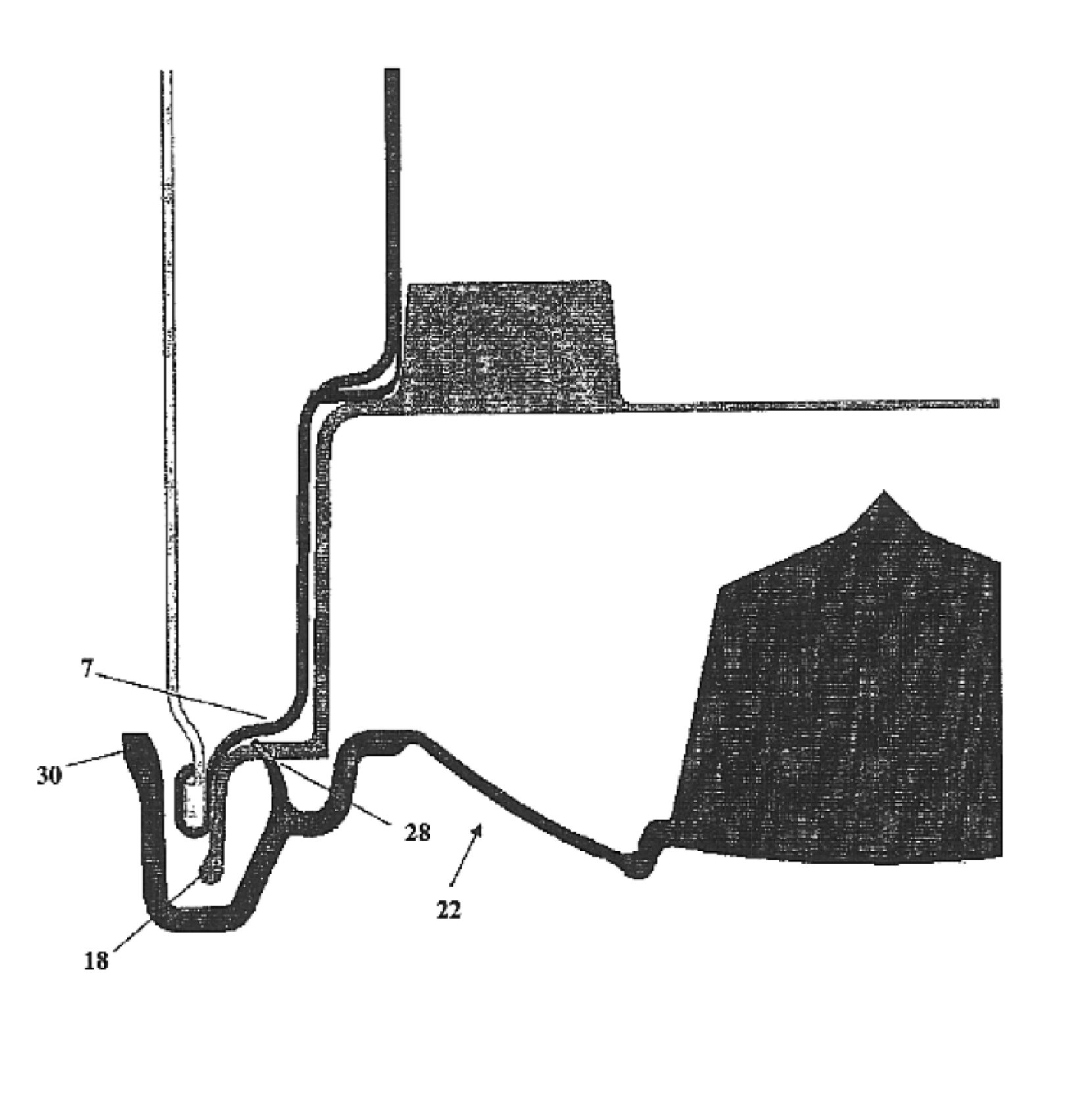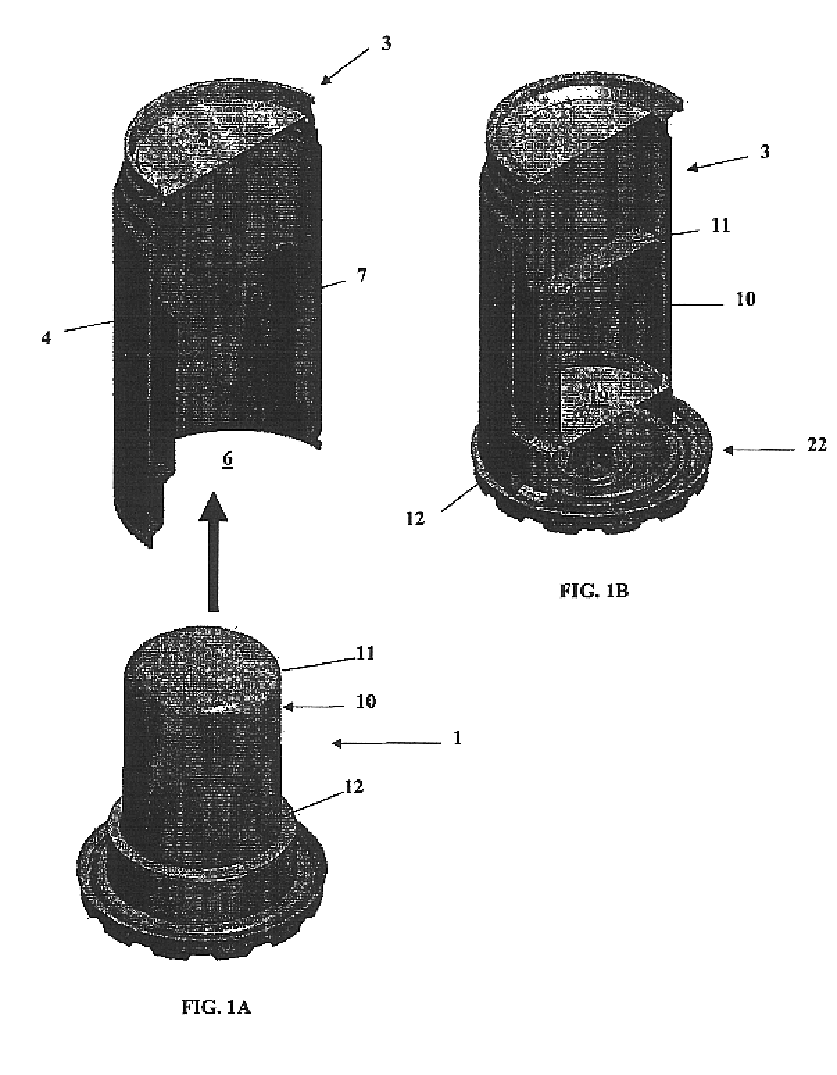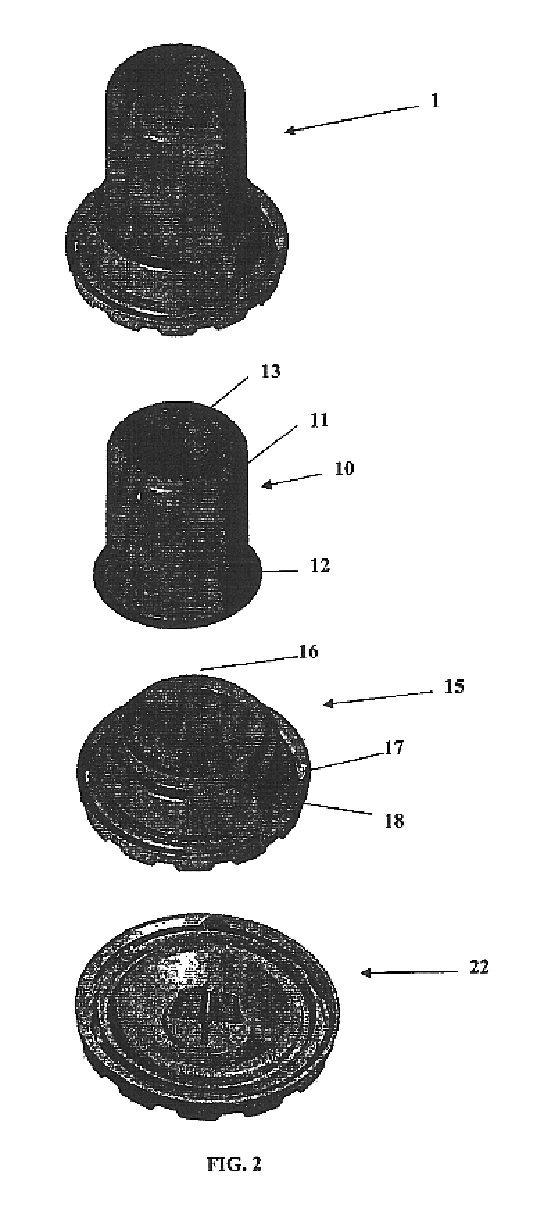Insertable thermotic module for self-heating cans
a thermotic module and self-heating technology, applied in the field of self-heating cans, can solve the problems of reactant typically not being placed in the cavity before, consumption of contents, and subjecting to the normal sterilization process, and achieves low vicat softening point and sufficient thinness
- Summary
- Abstract
- Description
- Claims
- Application Information
AI Technical Summary
Benefits of technology
Problems solved by technology
Method used
Image
Examples
Embodiment Construction
[0044]FIG. 1A illustrates a self-heating container 3 formed by outer sidewalls 4, top 5, and to inner wall 7. While not shown, it will be understood that top 5 may include a conventional pull tab or pop top opening such as found on typical soda cans. It can be seen how inner wall 7 is generally cylindrical and forms a chamber or cavity 6. While not explicitly shown, the interior wall of cavity 6 may be fluted to provide more surface area to facilitate heat transfer from the thermic module 1 to the contents of container 3. Thermic module 1 is sized such that it can be inserted into cavity 6 as suggested by FIG. 1B. The main components of thermic module 1, upper cup 10, lower cup 15, and end cap 22 are best seen in FIGS. 1B and 2. First or upper cup 10 will be formed of a generally cylindrical sidewall 11 and integral top 13. Upper cup 10 will also have a cup lip 12 extending around the base of sidewall 11. It can be seen in FIG. 1B how the interior of upper cup 10 is hollow. FIG. 2 a...
PUM
| Property | Measurement | Unit |
|---|---|---|
| internal pressure | aaaaa | aaaaa |
| temperatures | aaaaa | aaaaa |
| pressure | aaaaa | aaaaa |
Abstract
Description
Claims
Application Information
 Login to View More
Login to View More - R&D
- Intellectual Property
- Life Sciences
- Materials
- Tech Scout
- Unparalleled Data Quality
- Higher Quality Content
- 60% Fewer Hallucinations
Browse by: Latest US Patents, China's latest patents, Technical Efficacy Thesaurus, Application Domain, Technology Topic, Popular Technical Reports.
© 2025 PatSnap. All rights reserved.Legal|Privacy policy|Modern Slavery Act Transparency Statement|Sitemap|About US| Contact US: help@patsnap.com



